With both developing and developed nations facing a wide variety of emerging problems relating to the water environment, including water pollution due to economic development and water shortages due to population growth in the former case, and the aging of infrastructure and the handing on of technical know-how in the latter, as well as flooding and drought, the question of how to utilize and conserve limited water resources is an issue for the entire world. By combining the latest operational and information technologies with products, technologies, and know-how built up over many years, Hitachi is continuing to engage in activities aimed at maintaining a healthy and sustainable water environment.
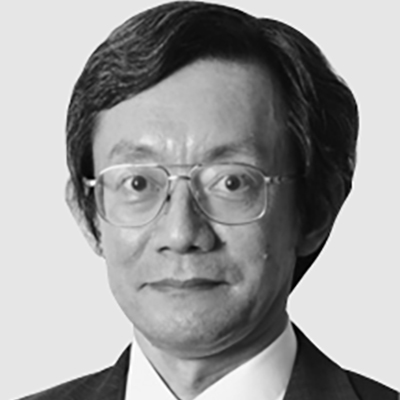
Water Solutions Division, Water Business Unit, Hitachi, Ltd. Current work and research: General management of water infrastructure business and R&D, both inside and outside Japan, and an expert member of ISO/TC 224/WG 9. Society memberships: The Society of Environmental Instrumentation Control and Automation (EICA) and Catalysis Society of Japan.
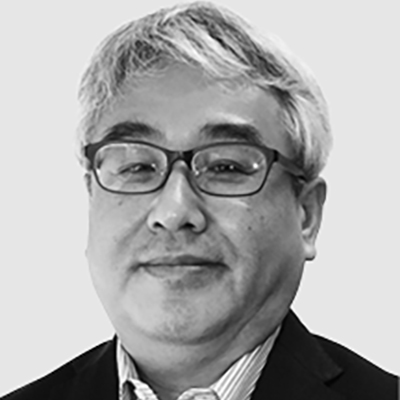
Global Division, Water Solutions Division, Water Business Unit, Hitachi, Ltd. Current work and research: Overseas water business. Certifications: P.E.Jp (Professional Engineer, Japan) of Water Supply & Sewerage.
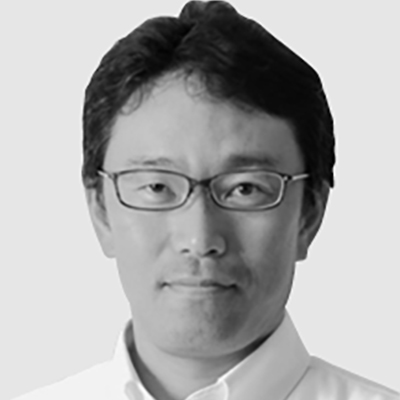
Public Control Systems Engineering Department, Control Systems Platform Division, Services & Platforms Business Unit, Hitachi, Ltd. Current work and research: Development and design of information and control systems for water/sewerage infrastructures. Certifications: P.E.Jp (Professional Engineer, Japan) of Water Supply & Sewerage. Society memberships: The Society of Chemical Engineers, Japan (SCEJ) and The Institute of Electrical Engineers of Japan.
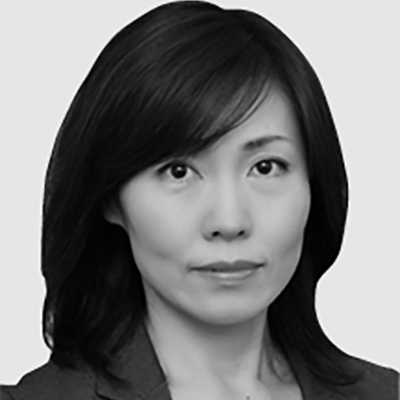
Process Engineering Research Department, Center for Technology Innovation – Materials, Research & Development Group, Hitachi, Ltd. Current work and research: Research and development of monitoring and control systems for water environment. Society memberships: The Japan Society of Mechanical Engineers and SCEJ.
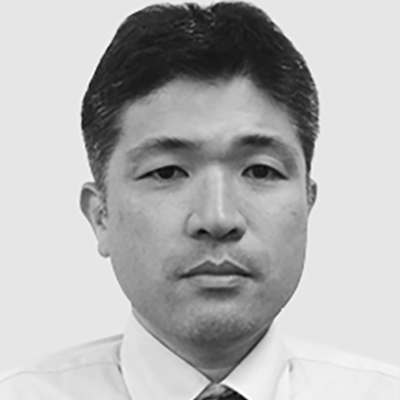
Environmental Systems Department, Matsudo Research Center, Industry and Water Business Administration Division, Hitachi, Ltd. Current work and research: General management of development of water treatment systems.
Being essential for maintaining life, water is one of the most essential foundations of the infrastructure underpinning society. However, the maintenance of a healthy water environment and water cycle faces numerous challenges, both in developed nations like Japan and in developing and emerging nations notable for their strong economic progress and population growth.
Worldwide, it is estimated that 700 million people do not have access to safe drinking water, and 2.4 billion people lack sanitary drainage systems. This is why one of the 17 Sustainable Development Goals (SDGs) of the United Nations (UN) is goal 6, “Ensure access to water and sanitation for all(1).” The objective is to achieve this by 2030, together with the water-related issues that play a part in the other SDGs (see Table 1).
Hitachi operates its Social Innovation Business, which combines control and other operational technology (OT) and information technology (IT) with the products and systems it has built up over many years, to deliver innovations in social infrastructure. The business aims to resolve issues and supply new value through collaborative creation with customers, including by focusing efforts on offering solutions based on the analysis and application of information by the Internet of Things (IoT) platform, Lumada.
Having had close to a century of involvement in the work on resolving issues relating to the water environment (water environment solutions) that forms part of this, Hitachi supplies a wide range of products, systems, and services(3). Recent times have seen an acceleration in collaboration with partners from outside Hitachi and in the development of new technologies for the IoT era. Recognizing that the SDGs referred to above are a challenge for global society, Hitachi also intends to contribute to achieving the associated targets and objectives through its water business and elsewhere.
This article presents an overview of developments relating to the water environment in Japan and overseas, and summarizes what Hitachi is doing.
Table 1—SDGs and Relationship with the Water Environment Essential to life, water is directly or indirectly involved in 17 of the SDGs, not just goal 6. The table lists some examples.
Essential to life, water is directly or indirectly involved in 17 of the SDGs, not just goal 6. The table lists some examples.
Earth has been described as a water planet, with oceans covering 70% of its surface. However, fresh water suitable for drinking or other domestic use is believed to make up only 0.01% of the total. Moreover, because this water is unevenly distributed around the planet, there are regions facing both economic and physical water shortages, particularly in low latitudes. Meanwhile, work is proceeding on trying to solve the numerous challenges associated with water, which include flooding and drought as well as water shortages and water pollution due to economic development(4).
Japan in recent years has experienced frequent localized instances of heavy rainfall and flooding, creating a need for measures able to deal with greater than expected rainfall. Furthermore, while the country has little experience of widespread drought, there will be a need over the long term to consider the consequences of climate change. Given that Japan has relatively many fast-flowing rivers compared with continental land masses, and taking note of the “virtual water” concept whereby imports of agricultural products constitute a de facto import of water, the country cannot be thought immune to the issue of water shortage. Accordingly, there is a need for ongoing measures to maintain a healthy water environment.
Table 2—Main ISO Technical Committees that Deal with the Water Environment (as of July 1, 2017)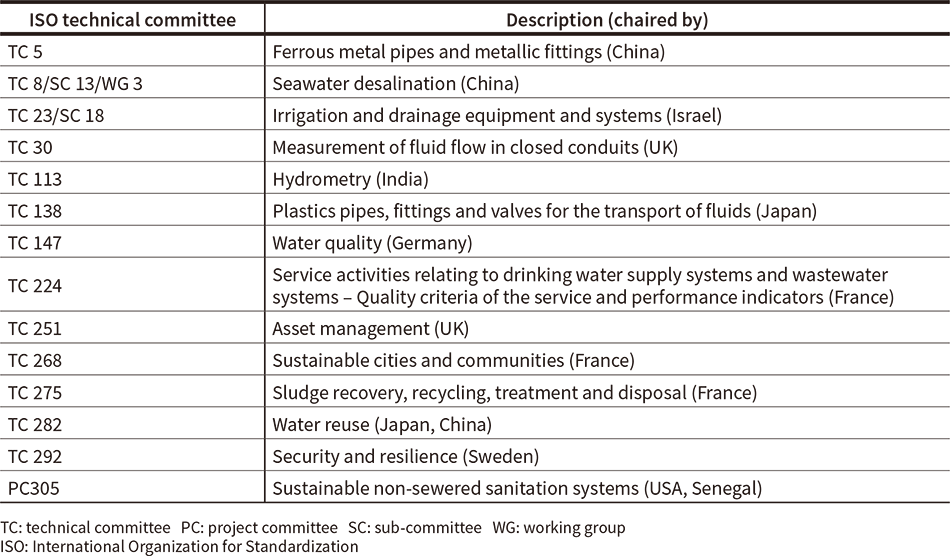 Many ISO committees have a role in international standardization work that relates to the water environment. The work mainly focused on product standardization prior to the establishment of ISO/TC 224, and on service standardization and resolving societal issues since then.
Many ISO committees have a role in international standardization work that relates to the water environment. The work mainly focused on product standardization prior to the establishment of ISO/TC 224, and on service standardization and resolving societal issues since then.
Globally, the amount of water taken from the environment by different regions in 2025 is estimated to be 1.3 times that in 2000, with higher increases expected in regions such as Asia where ongoing economic growth is forecast. In terms of market size, the water industry is predicted to reach 86.5 trillion yen in 2025, 1.4 times what it was in 2007(4). Water supply and sewerage make up approximately 90% of this market. The sector is recognized as a stable, ongoing market, with management and operation estimated to account for 40% to 50% of the total. The remaining 10% can be thought of as growth markets, such as seawater desalination, industrial water, and water recycling, where there is a recognized potential for technologies in which Japanese companies have an advantage, such as membrane treatment and efficiency improvement.
To help overcome global challenges, the industry is also actively engaged in the development of international standards and guidelines at venues such as International Organization for Standardization (ISO) technical committees, including ISO/TC 224 for “Service activities relating to drinking water supply systems and wastewater systems” and ISO/TC 282 for “Water reuse” (see Table 2). Recent years, in particular, have seen progress on service standards as well as product standards. Examples include the evaluation of business quality, asset management, emergency management, rainfall management, efficient water use, and the evaluation of recycled water quality. Japan is an active participant in this work, including by chairing working groups and subcommittees on rainfall management and risk and performance assessment for recycled water. In collaboration with the Japanese industry association, Hitachi, too, has had its staff participate in the activities of ISO/TC 224(5).
As of the end of FY 2015, Japan had 97.9% coverage for water supply and 77.8% for sewerage services(6), (7), with a market that is shifting away from new installations and toward replacement business. One issue is the upgrading of aging infrastructure, particularly that built during the 1960s and 70s when a large amount of construction work took place. This means that a variety of measures such as business integration, regional coordination, and partnerships between the public and private sectors will be needed if water supply and sewerage assets are to be passed on to the next generation in good condition despite challenges that include constrained local government budgets, issues with the handing on of technical skills as many experienced staff reach retirement, and lower demand for water due to falling populations and changing lifestyles.
In response, the Ministry of Health, Labour and Welfare published its new vision for water supply in 2013 and the Ministry of Land, Infrastructure, Transport and Tourism also published its new vision for sewerage in 2014. These documents presented visions for the long-term future of water supply and sewerage and directions for how to go about overcoming the challenges. Meanwhile, the Basic Act on Water Cycle was enacted in 2014, providing policies for a comprehensive and unified approach to water-related measures.
Further progress has also been made on specific lawmaking, with amendments to the Flood Protection Law being enacted in November 2015 in response to widespread instances of flood damage, and cabinet approval being given in March 2017 for amendments to the Waterworks Act dealing with asset management and with the regional coordination of water supply operations and introduction of public–private partnerships.
Hitachi is involved with a wide range of products, systems, and services that deal with areas such as water conservation, river management and irrigation, water supply and sewerage, water production and reuse, and wastewater treatment. The challenges associated with water environments depend on numerous natural, societal, economic, cultural, and other factors, making it difficult to find ways to get the best results for the environment as a whole from individual products or systems. With Japan making growing use of public–private partnerships for water supply and sewerage services, there is a need to consider all aspects of the business, from planning through to construction, operations, and maintenance. To achieve this, Hitachi is working on promoting its water environment solutions that provide comprehensive ways of overcoming the challenges.
Along with products such as sewage treatment plants and monitoring and control systems for water purification plants, this also requires system-wide optimization through broad-based interoperation of OT and IT.
Meanwhile, Hitachi put forward its concept of intelligent water systems in 2010, representing its core approach to obtaining the best overall results from appropriate management of water resources and associated infrastructure at the city or catchment level. This is a way of thinking about how to apply IT and control technologies at a regional level to help achieve goals such as improved reliability, more efficient regional management, and reduced load on the environment (see Figure 1). It is anticipated that factors such as recent advances in sensors and telecommunications and the ongoing regional coordination of water supply and sewerage services in Japan will drive rising future demand for such things as remote monitoring of equipment, regional management, and the centralized administration of information.
Figure 1—Examples of Intelligent Water Systems This concept helps optimize the distribution of water throughout a city or region through the wide-area integration of water management and treatment systems with information and control systems.
This concept helps optimize the distribution of water throughout a city or region through the wide-area integration of water management and treatment systems with information and control systems.
Figure 2 summarizes the main products, systems, and services from Hitachi that underpin its promotion of water environment solutions. Hitachi hopes to use the interoperation of a wide range of technologies, systems, equipment, and services to resolve the issues associated with water conservation, river management and irrigation, water supply and sewerage, and water production and reuse.
Encompassing water supply and sewerage among other things, the water business is influenced by a diverse range of factors and there is no one solution to its challenges. The same applies to the monitoring and control systems, water treatment processes, equipment and machinery, and other resources used by the industry, and work is ongoing on measures that include expanding their scope of application and improving reliability and efficiency.
Hitachi is also utilizing water industry private finance initiatives (PFIs) in Japan and investment in water and sewerage utilities overseas to build up experience in the operation and management of the products and systems it builds, and is putting this knowledge to use both in product improvement and in research and development.
Figure 2—Key Technologies, Product, Systems, and Services for Water Environment Solutions Because there is no single way to overcome the challenges posed by the water environment, Hitachi is coordinating the use of a wide range of technologies, systems, and services to help solve issues such as water conservation, river management, irrigation, water supply, sewerage, and water reuse and production.
Because there is no single way to overcome the challenges posed by the water environment, Hitachi is coordinating the use of a wide range of technologies, systems, and services to help solve issues such as water conservation, river management, irrigation, water supply, sewerage, and water reuse and production.
This section describes specific water environment solutions.
Figure 3—Overview of Water Distribution Control System By using network analysis to perform a real-time simulation of the distribution of water pressure based on a map of the water distribution network and online flow and pressure measurements, the system determines the optimal water pressure and flows for the water purification plants and reservoirs, and controls the pumps, valves, and other equipment automatically. In addition to an even distribution of water pressure, the system is also expected to help save energy and reduce leaks.
By using network analysis to perform a real-time simulation of the distribution of water pressure based on a map of the water distribution network and online flow and pressure measurements, the system determines the optimal water pressure and flows for the water purification plants and reservoirs, and controls the pumps, valves, and other equipment automatically. In addition to an even distribution of water pressure, the system is also expected to help save energy and reduce leaks.
Water supplies typically work by using a pump to pressurize water from a reservoir so that it flows through pipes to the tap. Accordingly, one of the challenges for utilities is to control the pressure of water in their network of pipes so that the pressure when it reaches the end-user's tap is not too high or too low. While too high a pressure risks higher leakage or use of electric power, pressure that is too low risks interruptions in supply or harmful substances from the soil getting into the water pipes.
To overcome this challenge, Hitachi has developed and supplied water distribution control systems that control pump discharge pressures based on an online analysis of the distribution of water pressure in the network. A system supplied in 1981 to the water utility in Takamatsu City provided guidance on how to operate valves so as to achieve optimal water pressure throughout the city, while another supplied in 1996 to Kashiwa City performed a realtime analysis of the network of distribution pipes with diameters of 100 mm or more and automatically controlled the distribution pump pressure from each water source (see Figure 3). Network simulation is the core technology in these systems, and work has also been underway recently on applications for improving energy efficiency and systems for managing leaks as well as optimizing pressure in the water distribution network.
For example, water supply consumes approximately 0.8% of electric power in Japan, and the Ministry of the Environment and Ministry of Health, Labour and Welfare is offering support to utilities for the installation of energy-efficient equipment. Along with equipment and machinery such as highly efficient pumps and inverters, benefits are also anticipated from water distribution control systems that perform system-wide optimization of energy consumption. The energy savings from installing such systems have been demonstrated(8).
A widely used practice in Japan is conventional activated sludge treatment, whereby microbes break down organic matter in microbial reaction tanks at treatment plants. Advanced treatment practices that deal with ammonia and phosphorus have also been adopted in major cities and elsewhere. However, because constant-output operation of the blowers that force air into the reaction tanks to encourage microbial activity can result in excessive air blowing, reducing power consumption is one of the challenges.
To overcome this, Hitachi has developed a nitrification control system that not only ensures that the blowers used for the removal of ammonia from the sewage (nitrification) are controlled appropriately, but also updates their control characteristics automatically with the changing seasons* (see Figure 4). This enables advanced sewage treatment to achieve both good water quality and energy efficiency, and helps make maintenance more efficient by automatically adapting to seasonal variations in microbial activity.
Hitachi analyzes water purification and treatment processes from a wide variety of perspectives, including the quality of the treated water, energy efficiency, cost, and ease of maintenance, and is engaged in an ongoing program of commercializing reaction models that it has first developed and tested in the form of new process control technologies. Figure 2 shows monitoring and control systems that have resulted from some of this work, and Hitachi plans to continue work on using technology based around monitoring and control to overcome the challenges of water purification and treatment.
Figure 4—Overview of Energy-efficient Control of Advanced Sewage Treatment Use of information and supervisory and control technology with two ammonia sensors combines consistent treated water quality with lower power consumption in the process for removing ammonia from sewage. The system also reduces maintenance work by automatically updating the treatment characteristics to allow for seasonal variation.
Use of information and supervisory and control technology with two ammonia sensors combines consistent treated water quality with lower power consumption in the process for removing ammonia from sewage. The system also reduces maintenance work by automatically updating the treatment characteristics to allow for seasonal variation.
To deal with the droughts and water shortages associated with global population increase and rising water demand, progress is being made on the installation of seawater desalination plants that use reverse osmosis (RO) membranes full of tiny pores to produce fresh water from seawater at low-latitude and island locations. These systems produce fresh water by pressurizing seawater to force it through an RO membrane to remove the salt. Because this requires seawater to be pumped at high pressure, how to reduce pump energy consumption is an issue, with pump power accounting for nearly half of total plant operating costs in some cases.
Hitachi developed its integrated system of seawater desalination and sewage treatment as a solution to this problem and is conducting a demonstration project. The system was developed through the “Water Saving and Environmentally-friendly Water Recycling Project” of the New Energy and Industrial Technology Development Organization (NEDO) in which Hitachi and Toray Industries, Inc. played a central role.
The integrated system dilutes the seawater with treated sewage to lower its salt concentration before passing it through the RO membrane to desalinate it at a lower pressure than needed for undiluted seawater (see Figure 5).
A demonstration project was undertaken from 2010 to 2013 in collaboration with the City of Kitakyushu at the Water Plaza Kitakyushu facility built by the Global Water Recycling and Reuse Solution Technology Research Association (GWSTA). The project achieved a reduction of more than 30% in energy consumption compared with a conventional seawater desalination plant.
With reference to these results, NEDO's International Energy Consumption Efficiency Technology and System Demonstration Project is scheduled to run from 2016 to 2020 in Durban, Republic of South Africa.
Since its first involvement in a major overseas water treatment project in the late 1970s, Hitachi has supplied equipment to more than 200 sites in approximately 40 countries and regions, primarily for water supply or sewage treatment. Drawing on this experience, Hitachi also plans to further develop its business in areas, like water production (seawater desalination) and water recycling, where future growth is anticipated.
Figure 5—Overview of Integrated System of Seawater Desalination and Sewage Treatment By first diluting the seawater with treated sewage to lower the salt concentration before passing it through an RO membrane, the system is able to desalinate the seawater with a lower pressure than it would without dilution. A demonstration project achieved energy savings of 30%.
By first diluting the seawater with treated sewage to lower the salt concentration before passing it through an RO membrane, the system is able to desalinate the seawater with a lower pressure than it would without dilution. A demonstration project achieved energy savings of 30%.
One of the challenges that comes with the rising global demand for water is a shortage of technical staff for operation and maintenance, particularly in emerging and developing nations. The water supply and sewerage industry in Japan also faces the challenge of handing on skills given the large number of experienced staff who are retiring, with the merging and regional coordination of utilities and partnerships between the public and private sector among the policies being pursued.
Hitachi is engaging in public–private partnerships such as comprehensive outsourcing and PFIs to help resolve these operational challenges associated with the water environment. In Yubari City in Hokkaido, for example, Hitachi invested in Yubari Reisui Co., Ltd., a special-purpose company, and embarked on Hokkaido's first water PFI project in April 2012. This project is contributing to the region through the construction of water purification plants that use membrane filtration and by handling maintenance and other operational management under a public–private partnership.
In 2015 and 2016, Hitachi also ran the Hitachi-DST Scholarship Program for South African Engineers, a corporate social responsibility initiative whereby it collaborated with the Department of Science and Technology in South Africa to bring young technical staff from that nation's water supply and sewerage industry to Japan. The program assisted with technical staff development by working with other agencies to provide two months of job training in Japan.
Meanwhile, the Japanese government has placed Society 5.0, its aim of creating a prosperous human-centric way of life that it calls the “super smart society,” at the heart of its 5th Science & Technology Basic Plan, and is also pursuing applications for digital technology. Innovations in industry based on the utilization of large amounts of digital information are also underway around the world.
Having for many years contributed to the social infrastructure through a wide variety of products and systems, Hitachi is seeking to provide comprehensive solutions and new value by combining its expertise, experience, and know-how in both OT and IT. The IoT platform, Lumada has a central role in this aim, with a wide variety of use cases having been incorporated from across Hitachi. In the case of the water environment, these include the use of pipe network simulation for water distribution control and energy-efficient control of sewage treatment described above.
The practical operation and maintenance of water supply and sewerage systems relies to some extent on the empirical and tacit knowledge of experienced technical staff. Hitachi is currently working on research and development that will help pass on this know-how, including the use technologies such as the IoT, artificial intelligence, and sensing that have made significant advances in recent years.
One example is the prospect of managing water purification plants and other treatment facilities more efficiently through the detailed analysis and visualization of data on their operation and maintenance, which are collected on a more extensive basis than in the past. Other possibilities include identifying signs of potential faults in pumps and other equipment so that maintenance or repair work can be undertaken at an appropriate timing, and formulating asset management plans designed to spread capital investment over time.
In this way, Hitachi intends to work on providing new value and comprehensive solutions to problems through collaborative creation with customers in the water industry and elsewhere.
This article has provided an overview of developments in the water environment in Japan and overseas and recent work on water environment solutions. Drawing on its many years of experience with products, systems, and services for the water industry, Hitachi intends to continue making a contribution to ensuring a safe and trusted water environment and an efficient water cycle.